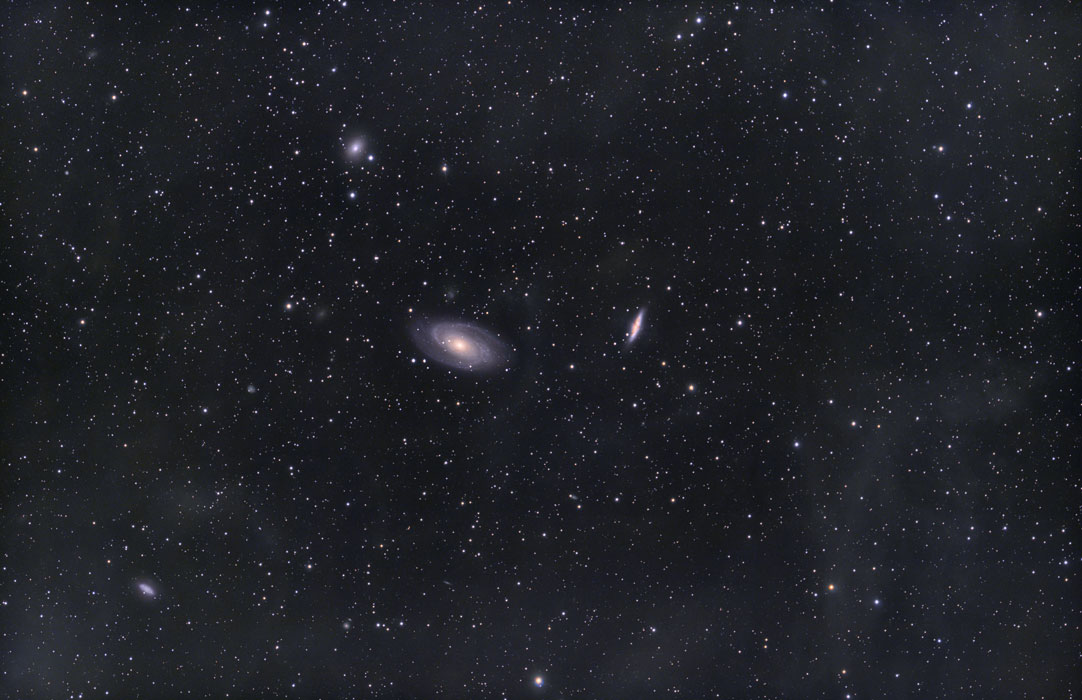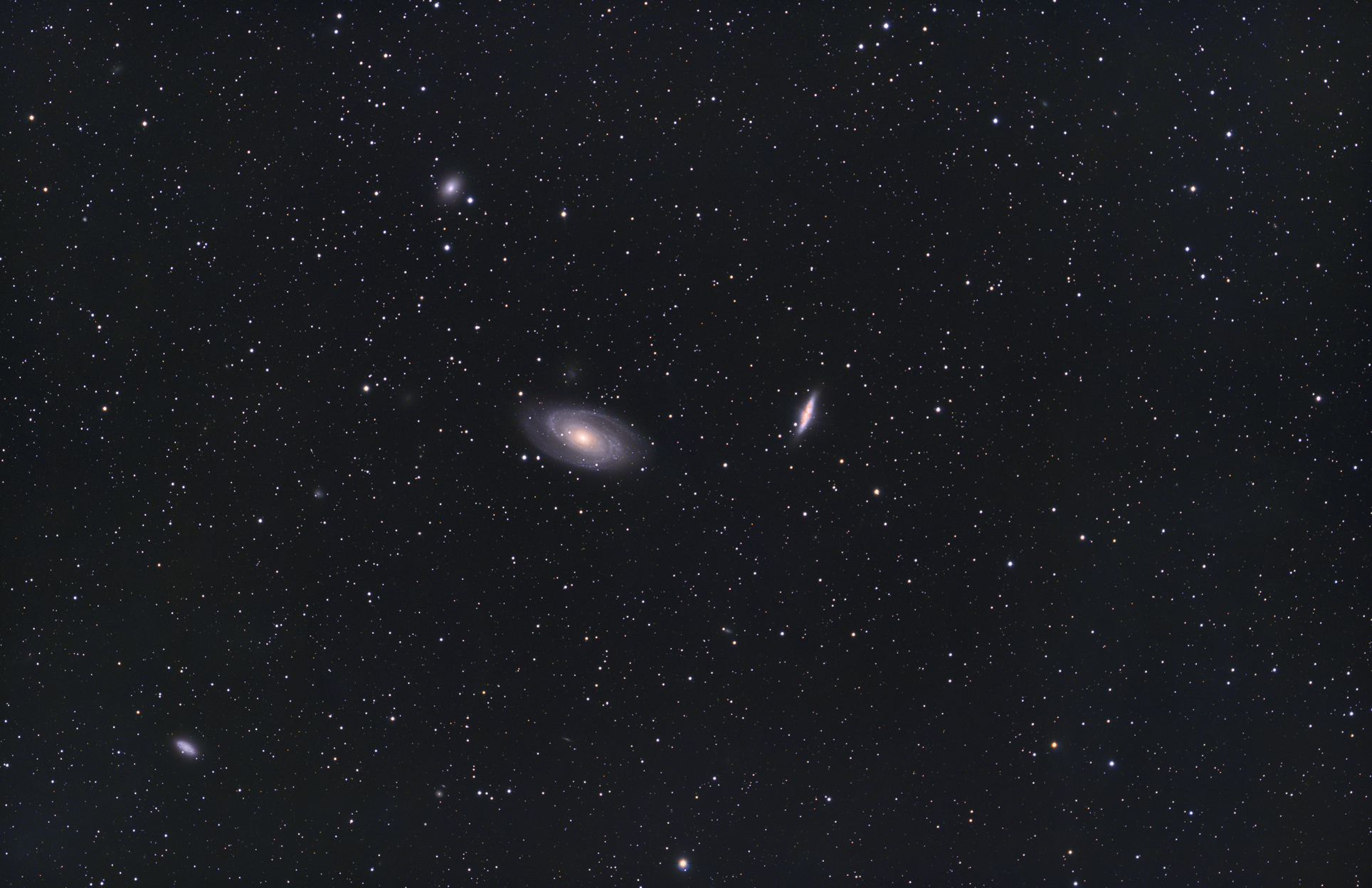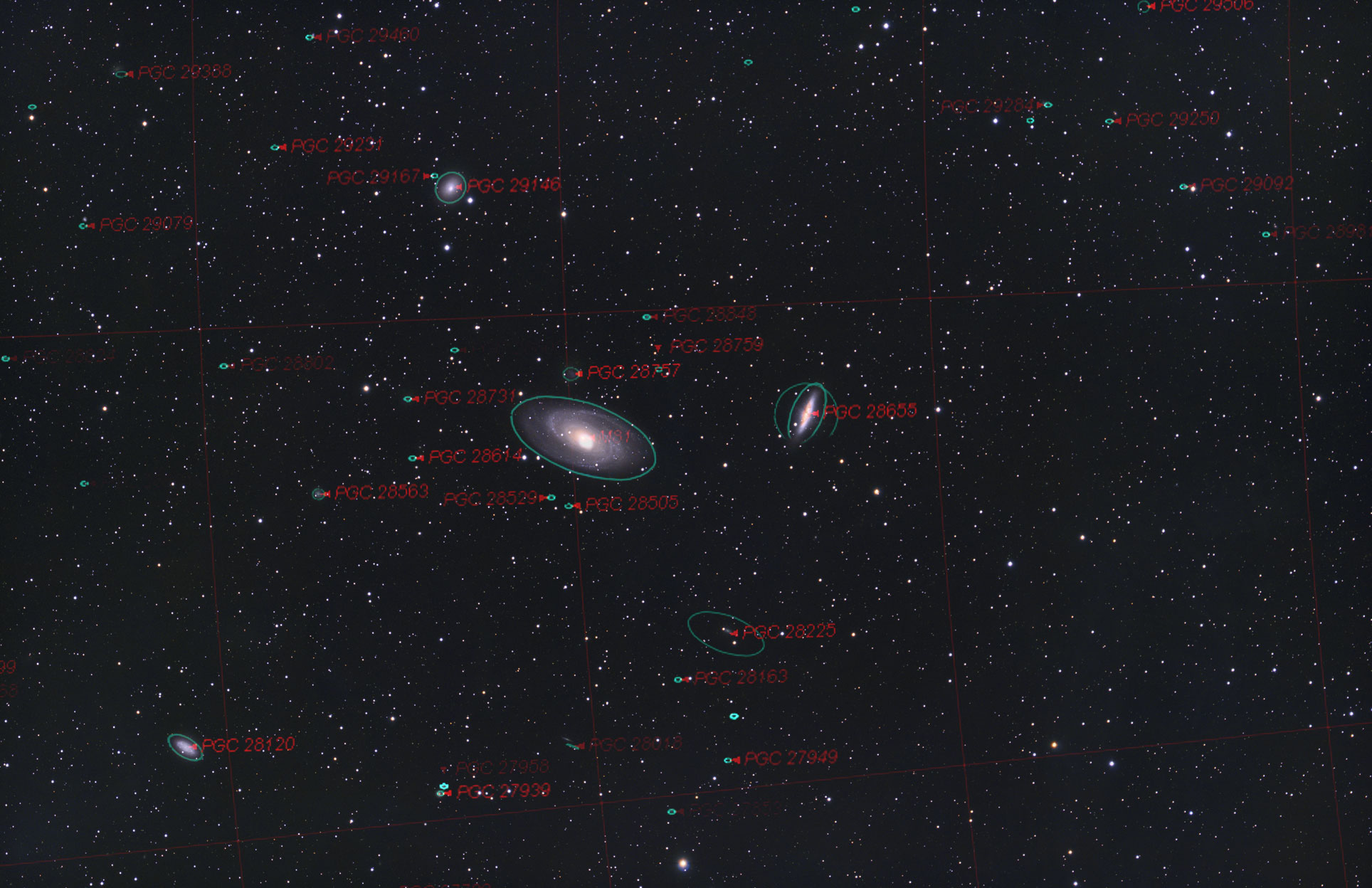Time Travel Research Center © 2005 Cetin BAL - GSM: + 90 05366063183 - Turkey / Denizli
M81, M82,
Integrated Flux Region (rollover)




|
Characteristics: Magnitude: 6.9 Size: about 21' x 10' Distance: 12 million light years RA: 9h 55m 58s Dec: 69 degrees 02' 43" Description: Place your mouse cursor over the above image to see what Steve Mandel has termed the Integrated Flux Nebula. This region is located high above the galactic plane and is filled with interstellar dust that reflects light from the billions of stars shining in the Milky Way galaxy. The signal from the IFN is very faint and difficult to process above the background noise. With a long exposure and careful attention to good flats, it is possible to bring out much of this region. This area is filled with galaxies both large and small. M81 (the largest galaxy just left of center) is a grand-design spiral galaxy that was discovered by Johann Bode in 1774. Due to its relatively large size and high surface brightness, it is an easy target for visual observation through small aperture telescopes. M81 forms a galactic pair with M82 (just right of center), located only 150,000 light years apart, and the two galaxies have influenced each other through a close encounter occurring tens of millions of years ago. Closer examination of this image reveals a larger companion galaxy just to the top of M81, referred to as Holmberg IX. More information about M81 may be found here. M82 (the smaller galaxy just right of center) is a companion to M81 and was also discovered by Johann Bode in 1774. It has an odd, oblong shape that is thought to have arisen from gravitational interaction with M81 millions of years ago. High resolution color images of M82 show dramatic tendrils of red gas shooting from the center of the galaxy. Photographic Details: Date: March 24, 2007 Scope: Takahashi FSQ-106 on the G11 Losmandy Mount. Autoguider: ST402 with e-finder. Camera: STL11K. Filters: Luminance, R, G, B Type II filter set (Astronomik). Exposures: L: 60 x 4'; R: 12 x 5'; G: 12 x 5'; B: 12 x 6'. Total exposure duration 7.2 hours. Conditions: Temperature 45 degrees at start of session; above average transparency; fair seeing; calm. Imaging performed at -20 degrees C throughout. Post-processing: Calibrated, aligned, and combined in MaximDL, followed by DDP in ImagesPlus (IP). Subsequent levels and curves adjustments in Photoshop CS (16 bit format). |